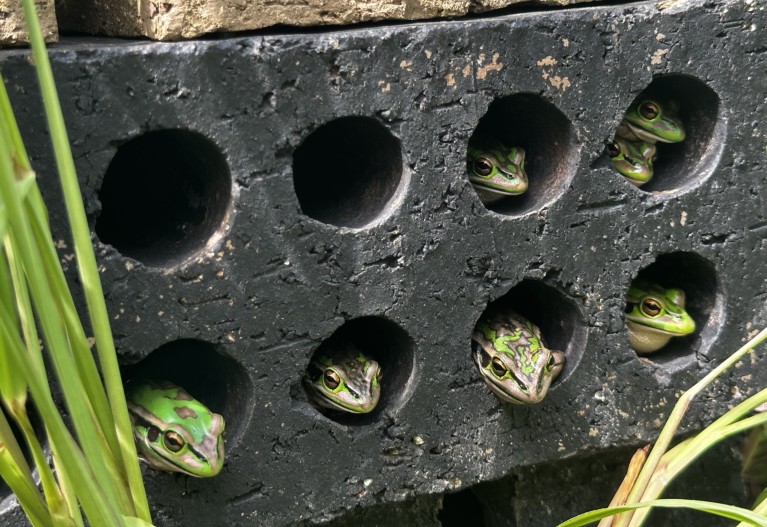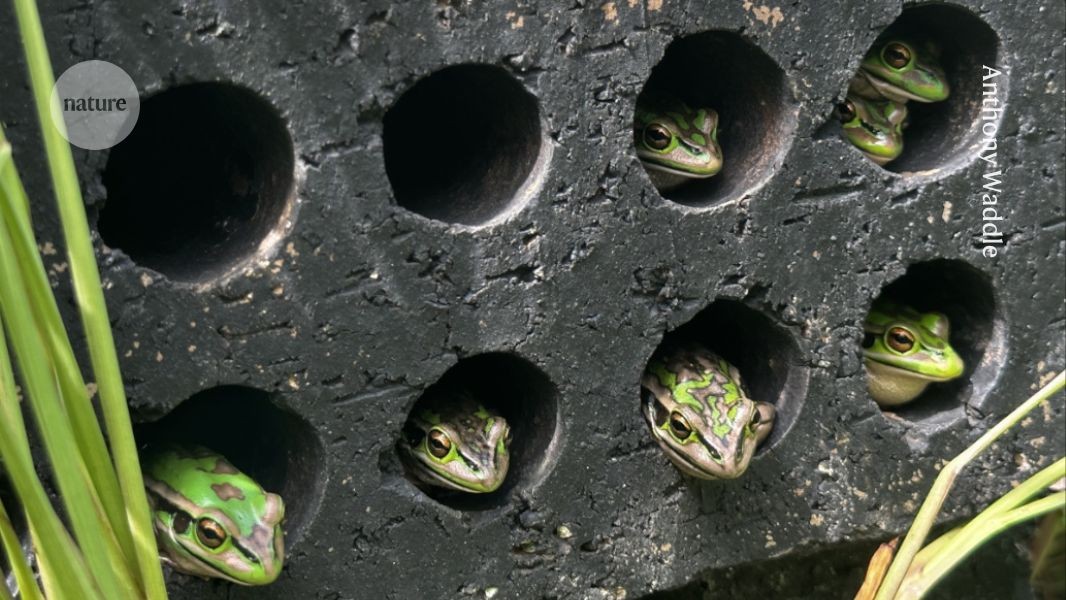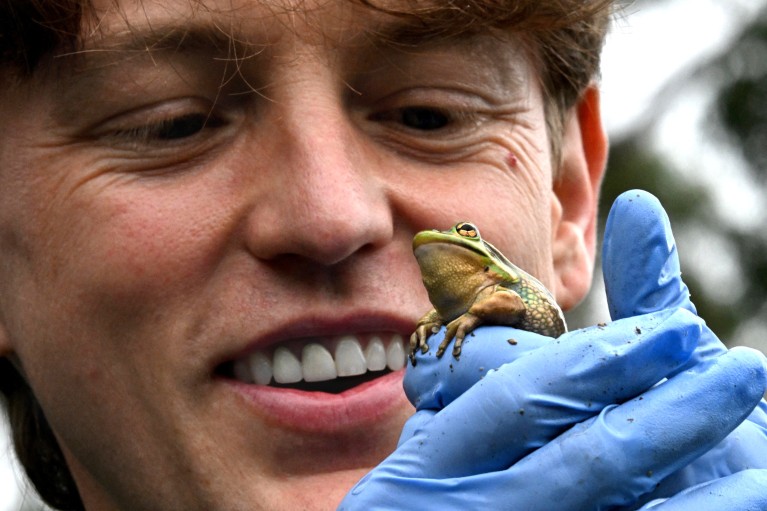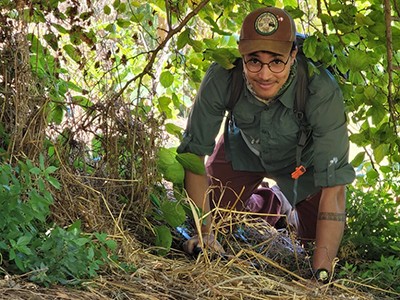
Safe and snug: frogs kept warm in brick ‘saunas’ are able to ward off a deadly fungal infection.Credit: Anthony Waddle
On warm, muggy evenings, conservation biologist Anthony Waddle and his students, along with local frog enthusiasts, venture into the wild and wet suburbs of Sydney, Australia, head torches on, searching for green and golden bell frogs (Litoria aurea). Then they frogmarch the captured amphibians into a small greenhouse made from nothing more than a stack of masonry bricks for a “luxury treatment” sauna — which might ultimately save their lives, he explains.
For many, the idea of a ‘frog sauna’ might sound bizarre. But when Waddle’s team published a study (A. W. Waddle et al. Nature 631, 344–349; 2024) showing that a simple sit in a warm enclosure could treat the deadly chytrid fungal infection plaguing the green and golden bell frog, it made waves — and resulted in him winning the 2025 Future for Nature award. Now, as a postdoctoral researcher at Macquarie University in Sydney, he’s collaborating with partners, training local communities and helping Australia to save its declining population of these glossy green-and-golden-streaked frogs that fit in your palm and croak with a muffled, motorcycle-like revving sound.
Chytrid fungus infections are a huge threat to the global frog population and have contributed to declines in more than 500 frog species and the extinction of more than 90 others.
The good news is that infections can be cleared easily in some frogs under the right conditions, because the fungus is sensitive to heat. “Around 28 °C is enough to really limit chytrid growth,” Waddle says. And the sauna treatment can pay off really fast: a few hours a day for a week or less is all that’s needed. Saving one female frog can markedly change the trajectory of a population, because a single adult can produce thousands of offspring in one season.

Waddle stacks bricks inside a mini greenhouse, where they function as saunas for frogs.Credit: Saeed Khan/AFP via Getty
How the treatment came about was serendipitous. In 2013, researchers studying tree frogs in Queensland, Australia, noticed a pattern: in areas where chytrid fungus had spread, frog populations survived near large granite boulders and crevices, but disappeared from shaded, forested areas. The researchers hypothesized that the boulders acted as natural refuges that absorbed heat during the day and slowly released it at night. The process created warmer microhabitats that protected the frogs from the fungus.
However, not all habitats had these heating boulders. So Waddle and his colleagues wanted to finally “test this idea that people had been hemming and hawing about forever”, but that no one had tested by experiment.
Trying a new approach meant there was no standard blueprint. Waddle and his team had to test and adjust various sauna designs as they went. Their simple set-up consists of a small garden-greenhouse frame wrapped with translucent plastic and placed over a stack of masonry bricks, each with a series of openings for frog entry and exit. Their experiments found that the frogs readily find and enter saunas on their own.
So far, the researchers have placed about 70 frog saunas in three sites in greater Sydney and plan to use three more sites there in the next Southern Hemisphere winter, in 2026. They have also created how-to guides, educational videos and workshops to teach community members how to build the saunas (see ‘Quick-fire Q&A’). Several greenhouse suppliers have even listed the set-up on their websites as useful for creating frog saunas, as well as for growing plants.
The saunas are a low-cost garden habitat for the endangered frogs that live throughout southeastern Australia. Waddle has worked with other frog conservationists, encouraging local people to use apps such as FrogID. This lets users make audio recordings of frog calls and upload them to an online database, togeher with GPS data. Experts then identify the frogs and notify the users.
Jodi Rowley, a herpetologist at the Australian Museum Research Institute in Sydney and lead scientist for FrogID, says that tens of thousands of people across Australia use the app, and have put more than 1.3 million frog records on the map. The app has contributed to the discovery of 13 frog species and is actively used by communities to monitor local frog populations. Now, regular FrogID users can get frog-sauna information and updates. “We are hoping that communities are using the app to record their local frogs and potentially determine whether the frogs do better after the installation of frog saunas,” Rowley adds.
Beyond black and white: an ecologist applies racial-justice principles to predators and their ecosystems




